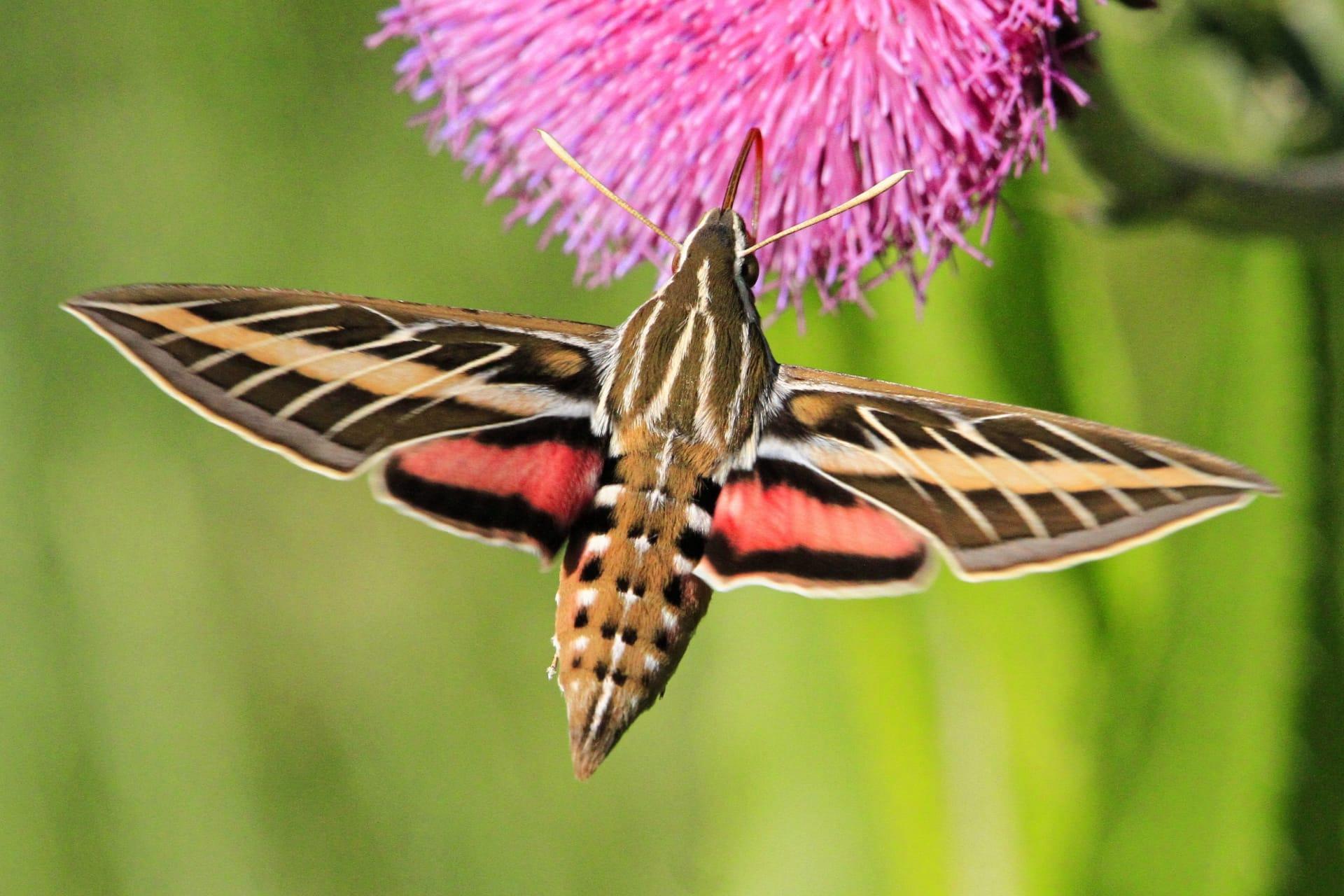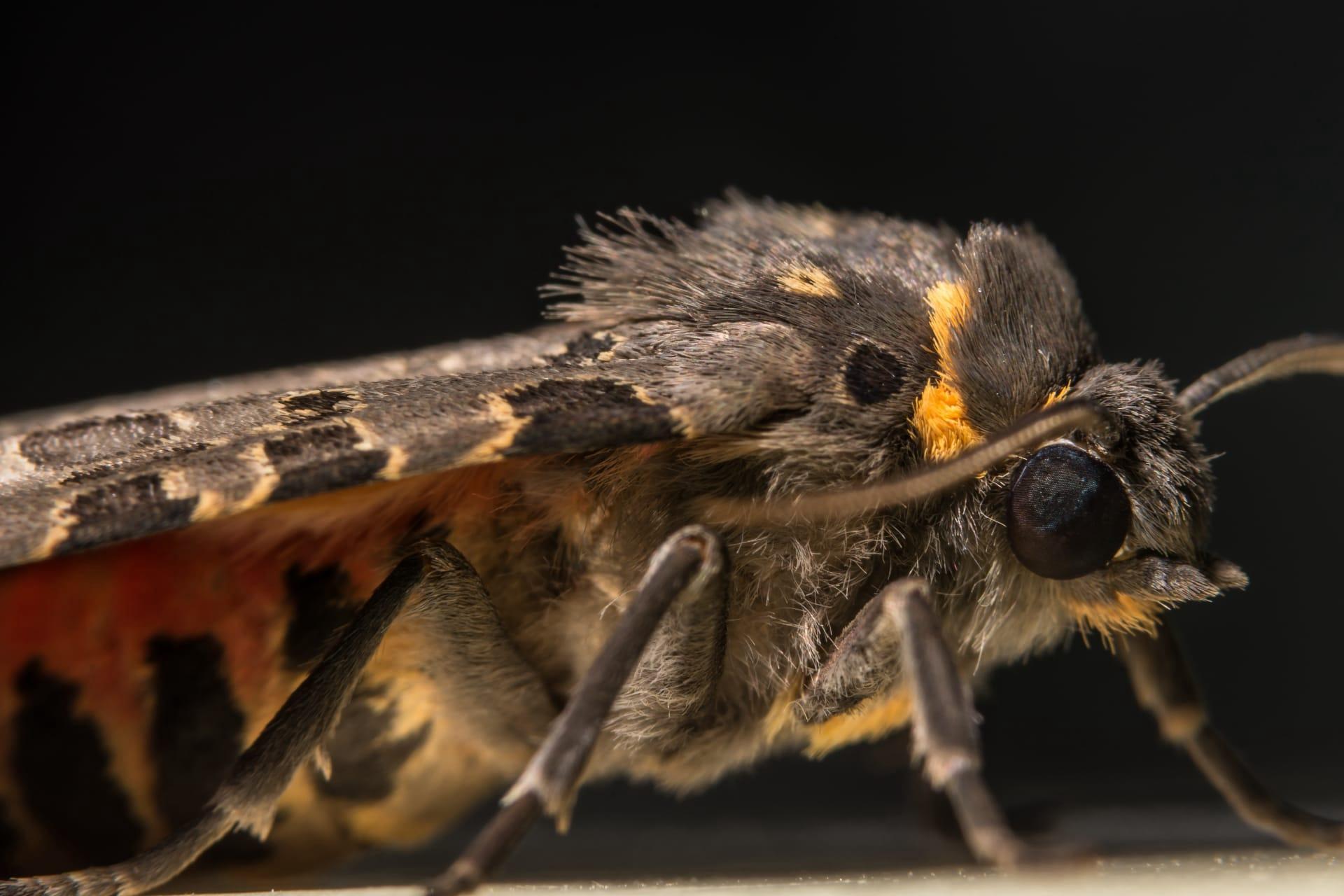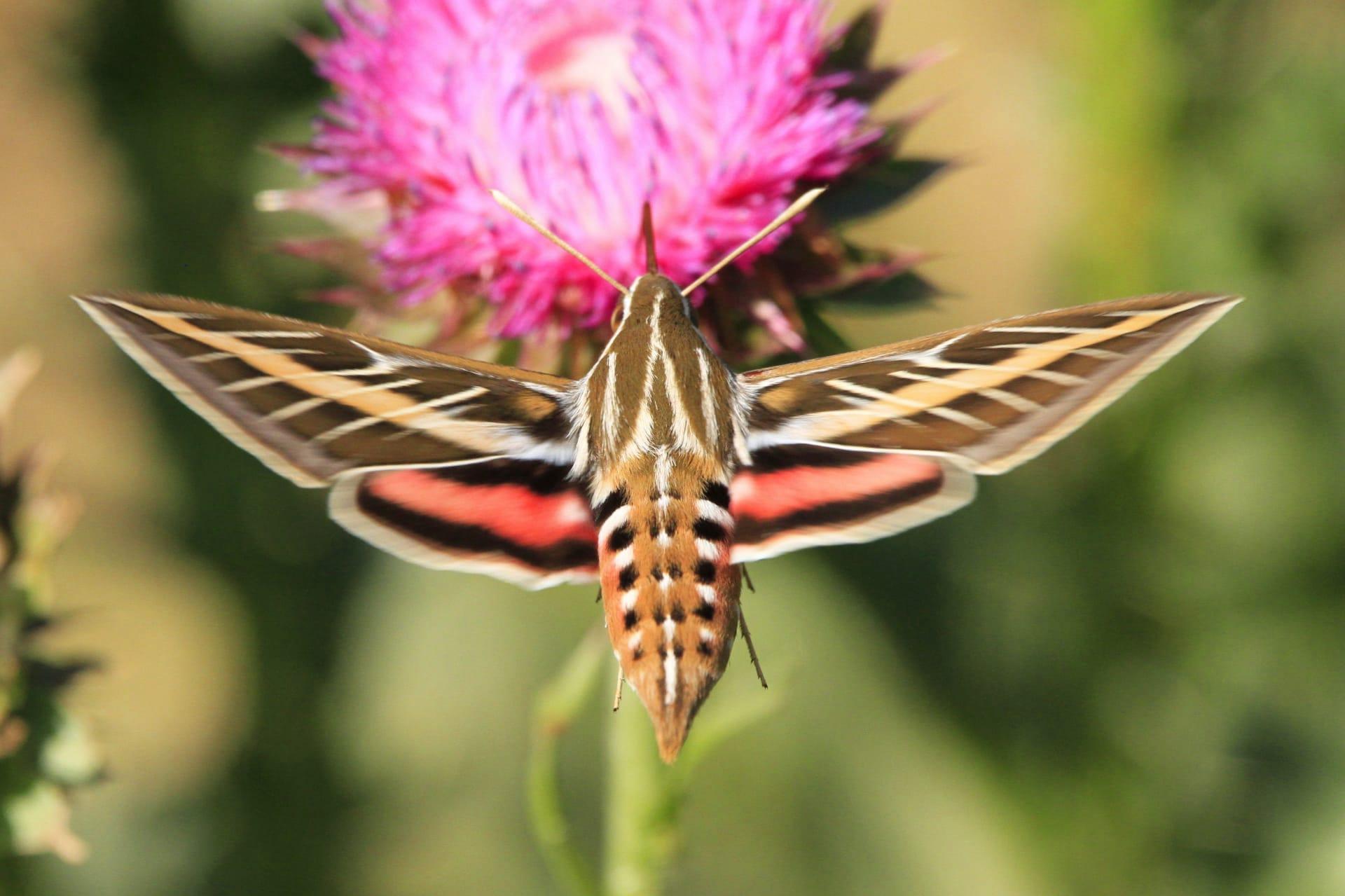Sphinx Moth Characteristics
- Home /
- Mini Encyclopedia /
- Animal /
- Sphinx Moth Characteristics
1
The Sphinx Moth, a captivating creature, boasts a notable wingspan that can stretch from 2 to 8 inches, making it one of the larger moth species. Intriguingly, their lifespan varies significantly. In their adult form, they typically live for a mere 2 to 3 weeks. However, their entire life cycle from egg to adulthood can span several months.
One of the Sphinx Moth's most remarkable organs is its proboscis. This long, straw-like tongue can extend several inches, allowing the moth to drink nectar from deep within flowers. This specialized feeding organ is coiled under the head when not in use, showcasing a unique adaptation for survival.

2
Question: What is the Sphinx Moth known for in terms of its flying ability?
Answer: The Sphinx Moth is renowned for its exceptional flying skills. It can hover in mid-air like a hummingbird, a trait that is quite rare among moths. This ability is facilitated by their rapid wingbeats, which can reach up to 85 beats per second. Their agile flight is not only a spectacle but also enables them to feed on nectar while airborne, a critical aspect of their survival.

3
The Sphinx Moth exhibits extraordinary agility in its movements. Capable of flying in all directions, including backwards, it maneuvers with precision and speed. The moth's flight muscles are exceptionally powerful, allowing for quick takeoffs and sudden changes in direction, an adaptation likely evolved for escaping predators.
Feeding predominantly on nectar, the Sphinx Moth displays a unique foraging behavior. Its proboscis, which can be as long as its body, enables it to extract nectar from deep within flowers while hovering. This feeding method demands a high-energy intake, which is met by the sugar-rich nectar, vital for sustaining their energetic flight.

4
Sphinx Moths thrive in a variety of environments, from gardens and meadows to forests and deserts. These adaptable insects prefer habitats where flowering plants are abundant, as these are essential for their nectar-based diet. Their global distribution includes North America, Europe, and Asia, indicating a remarkable adaptability to different climates and ecosystems.
Reproduction is a fascinating aspect of the Sphinx Moth's life. Females lay their eggs on the underside of leaves, particularly favoring host plants that cater to the needs of their larvae. These eggs hatch into caterpillars, which are known for their striking patterns and horn-like protrusions. The caterpillars undergo several molts before pupating, eventually emerging as adults to continue the life cycle.

5
Book: "Wings of the Sphinx: The Mystical World of the Sphinx Moth" by David Attenborough, published in the United Kingdom in 2015, delves into the mysterious life of the Sphinx Moth. Attenborough's vivid narrative, accompanied by stunning photography, guides readers through the moth's lifecycle, its unique adaptations, and its role in various ecosystems.
Book: "The Secret Life of Moths" by Maria Merian, released in Germany in 2002, offers an in-depth exploration of various moth species, including the Sphinx Moth. Merian's detailed illustrations and descriptions provide an enthralling look into the world of these nocturnal insects, emphasizing their ecological significance and remarkable adaptability.